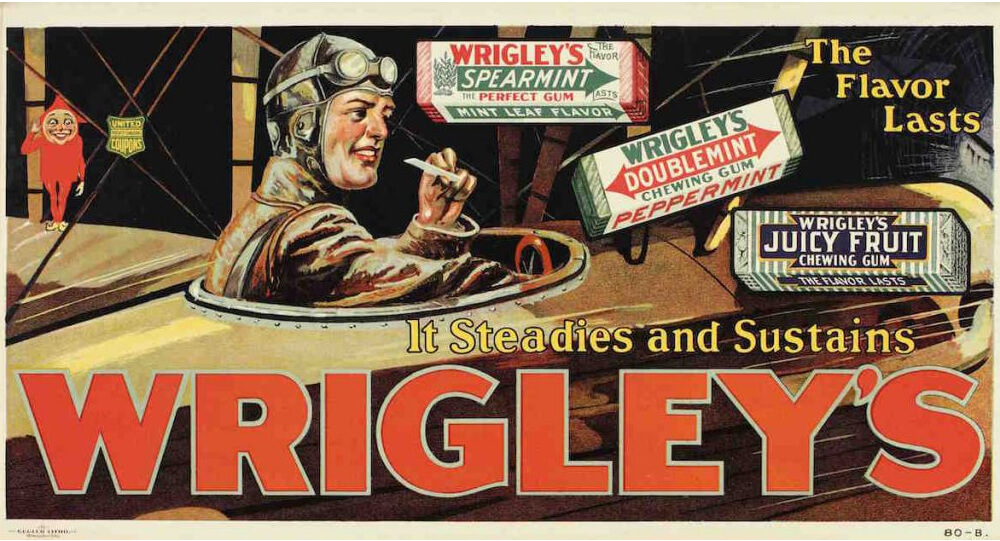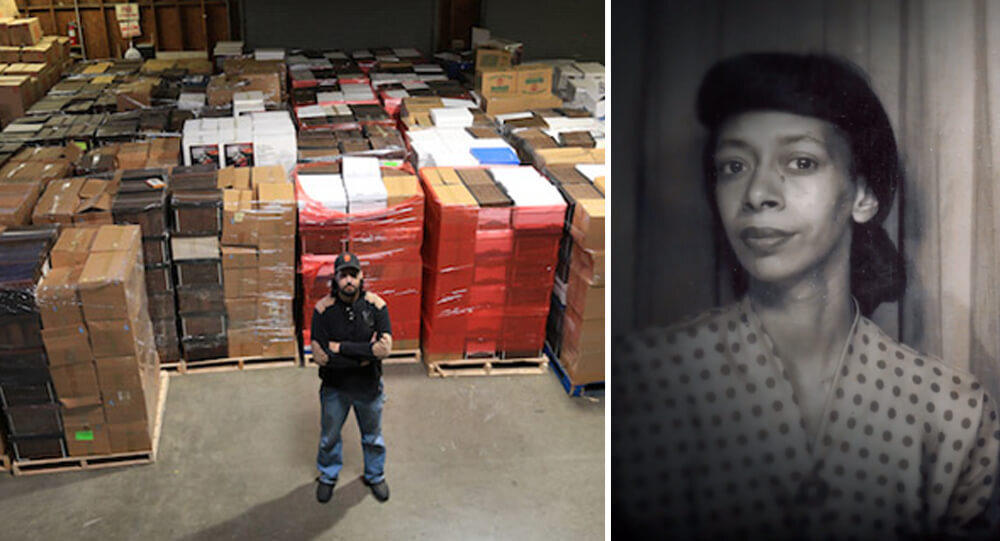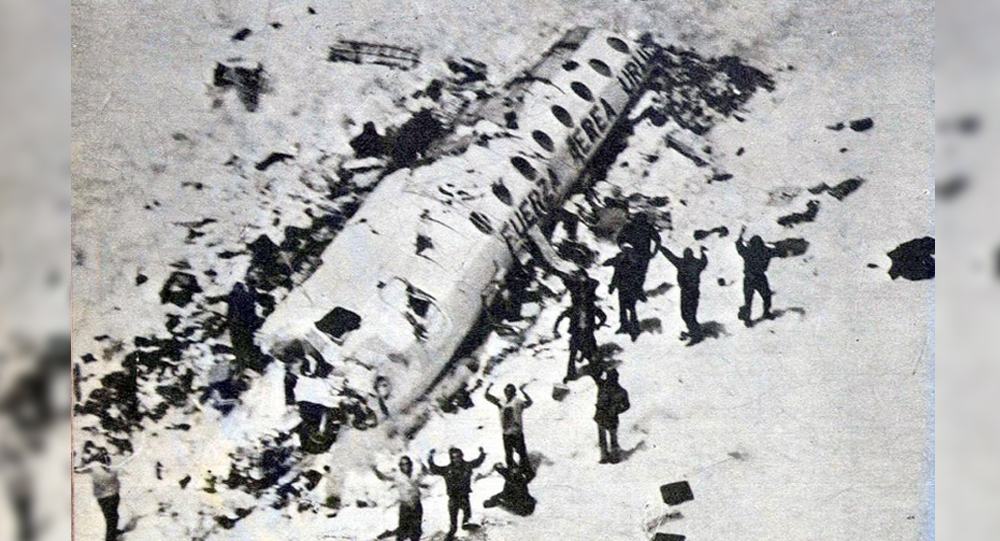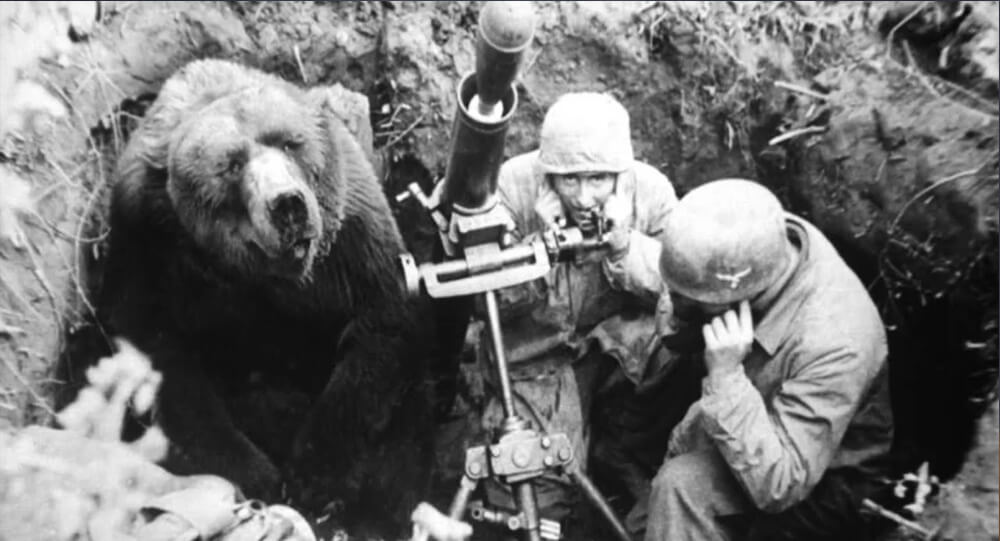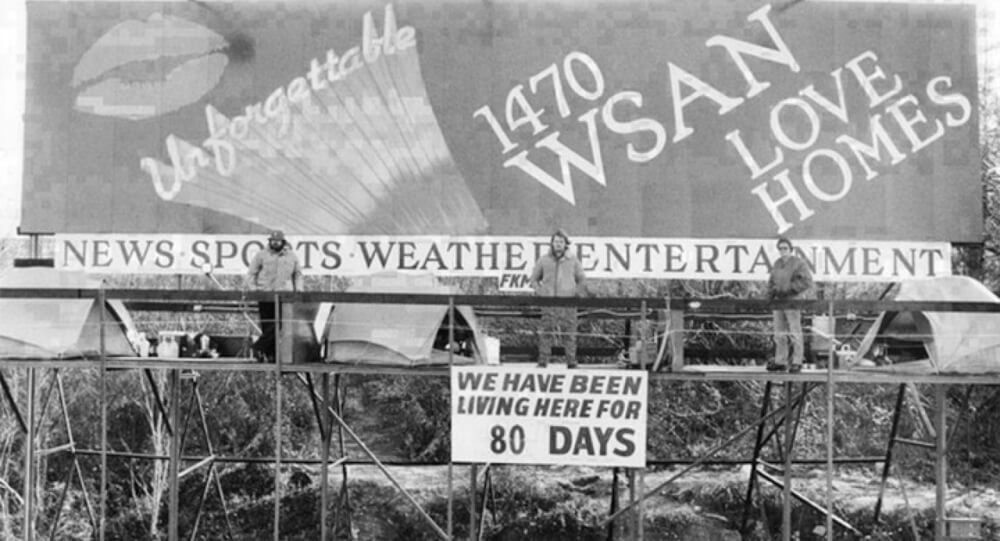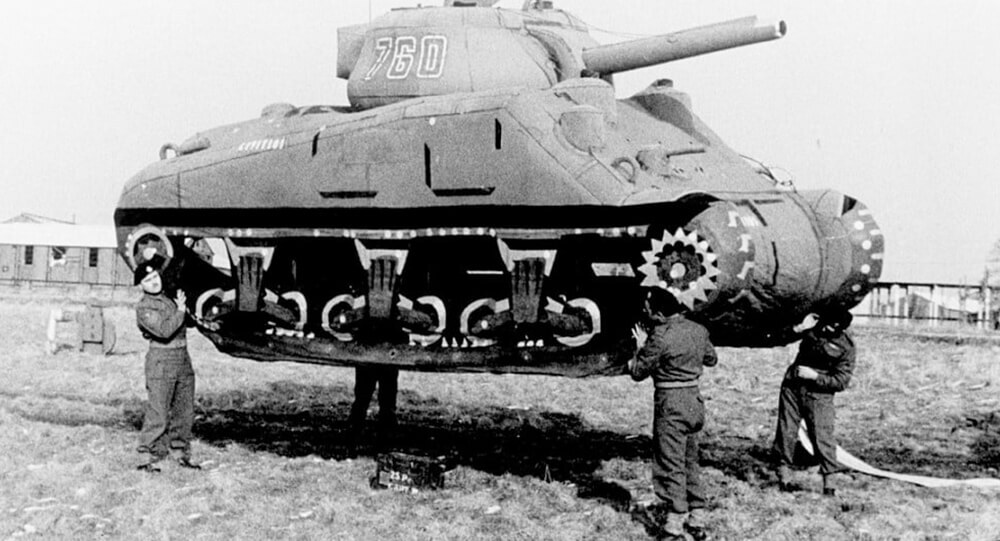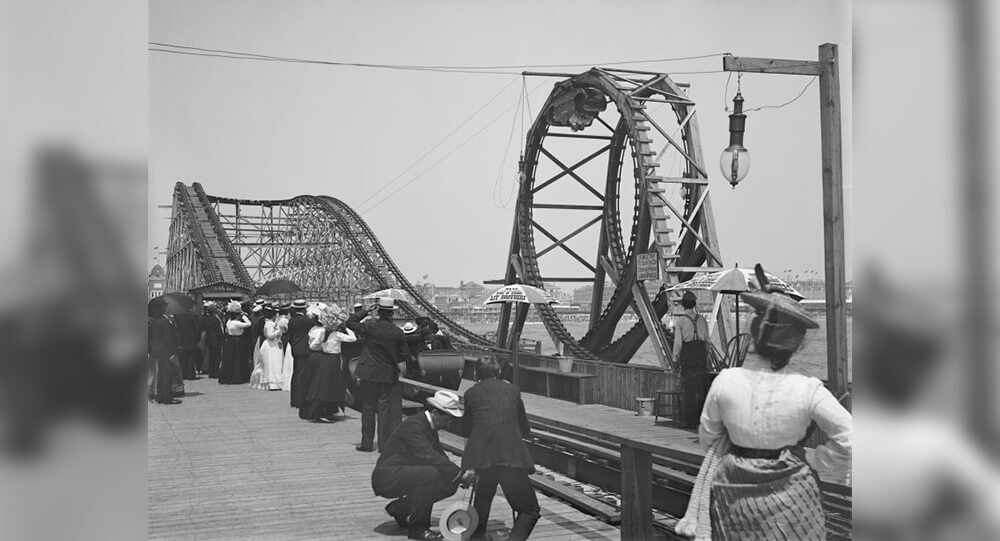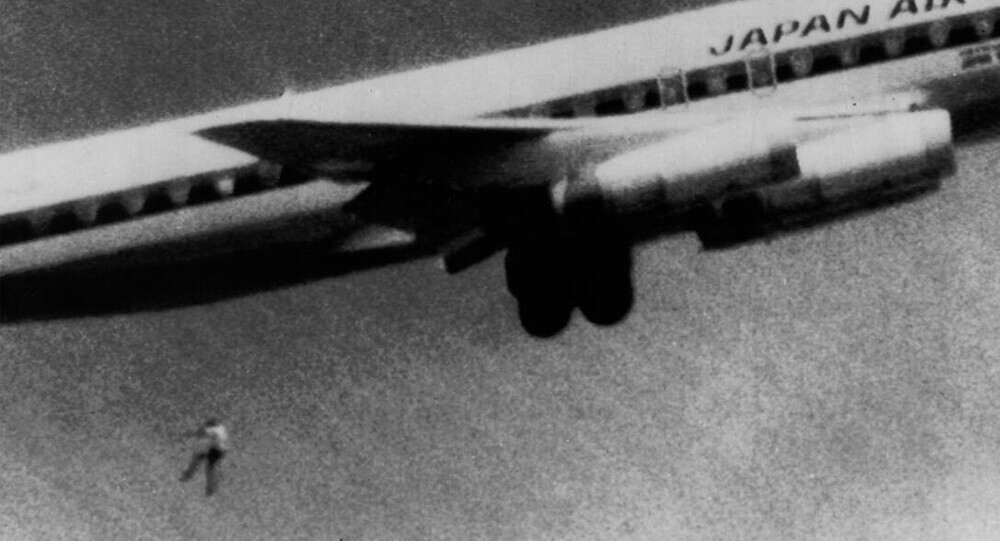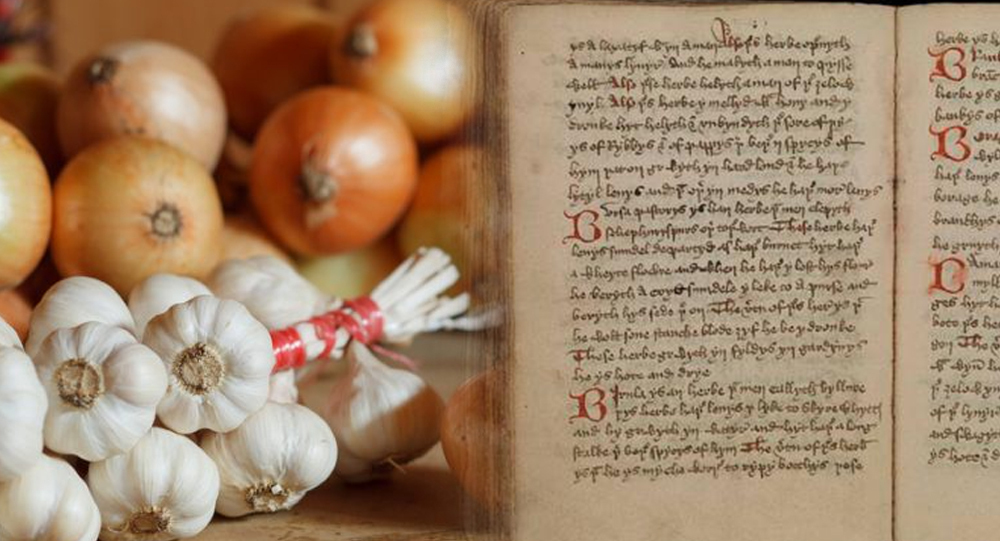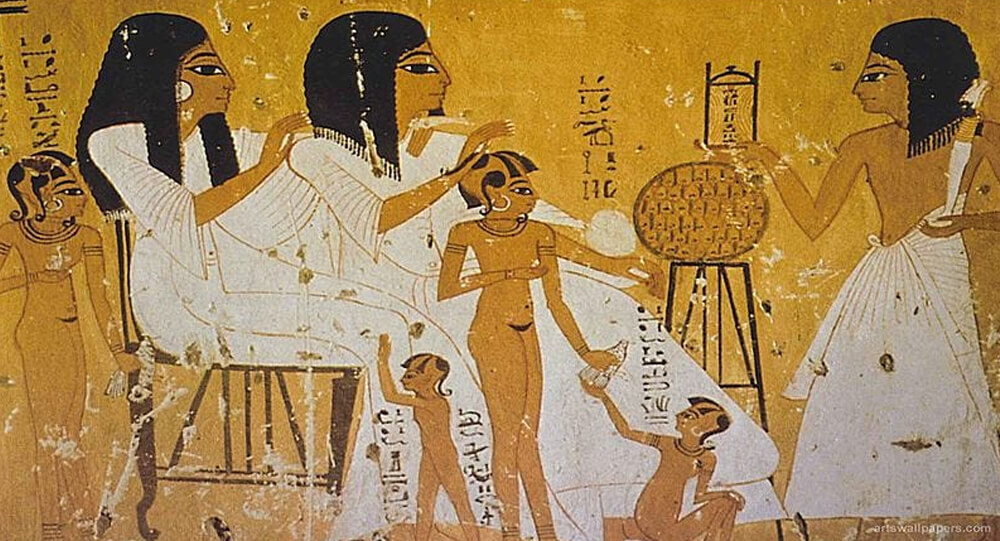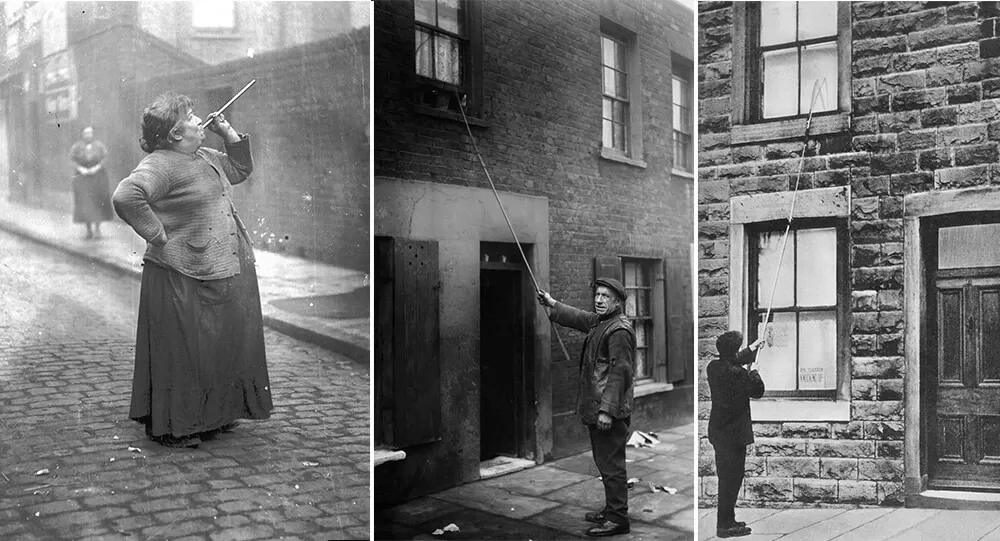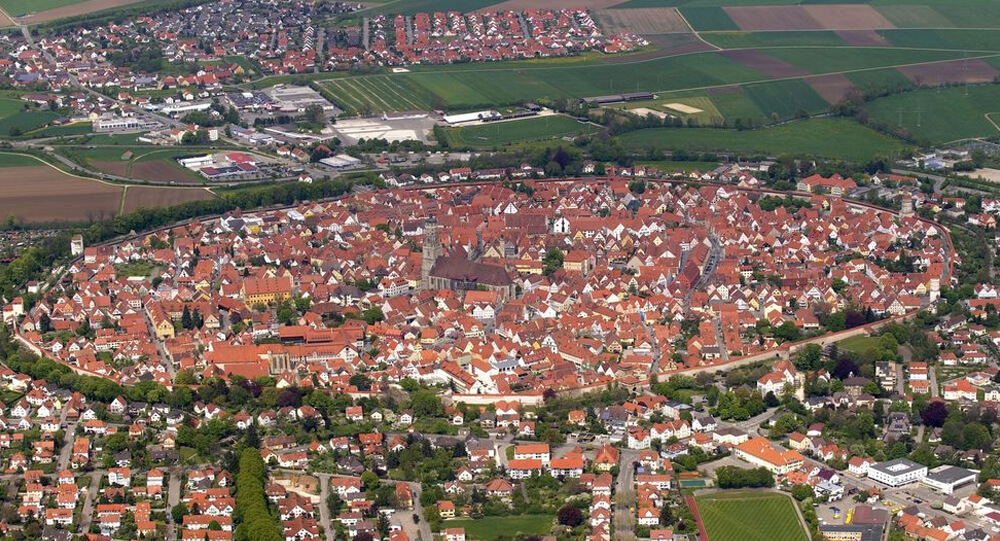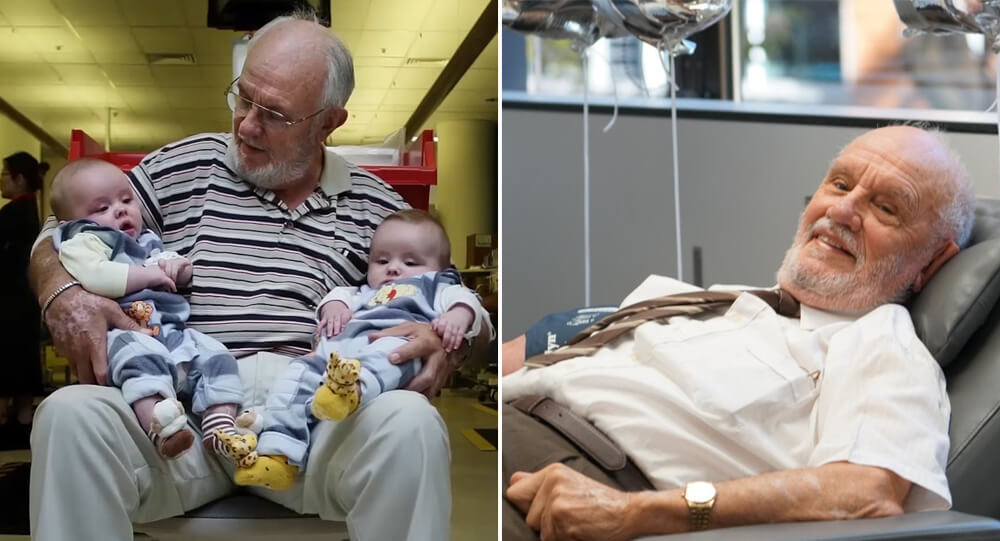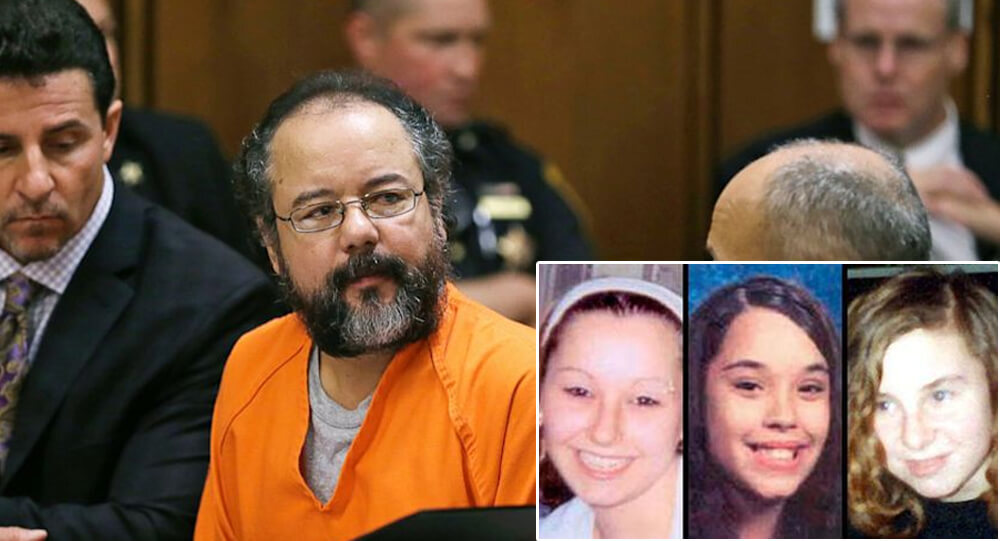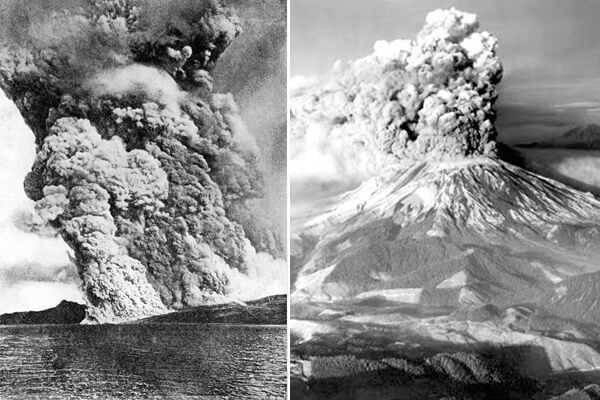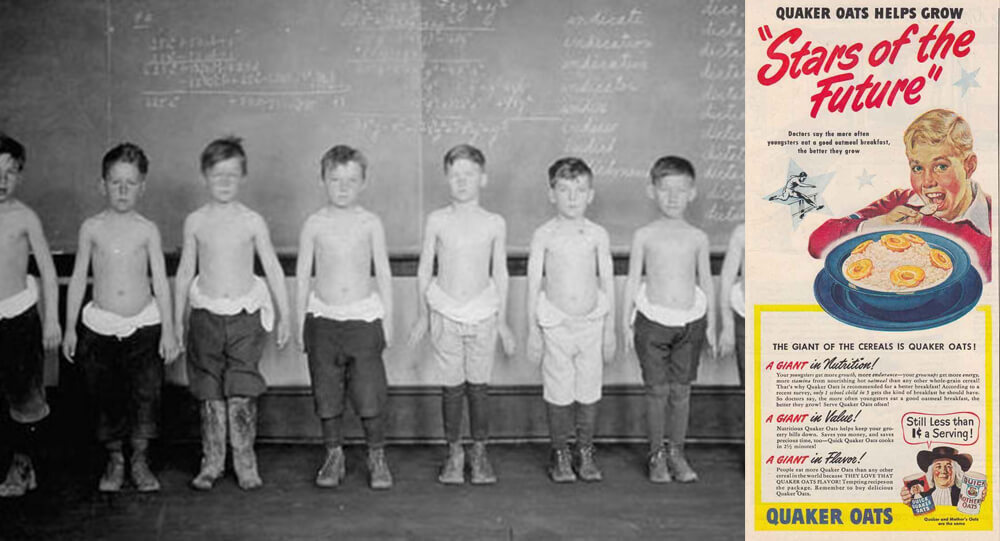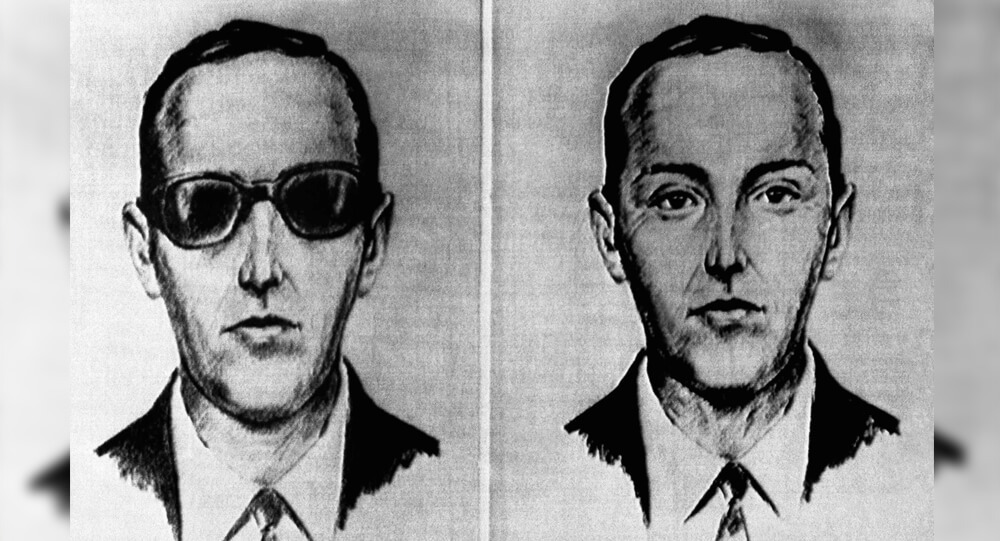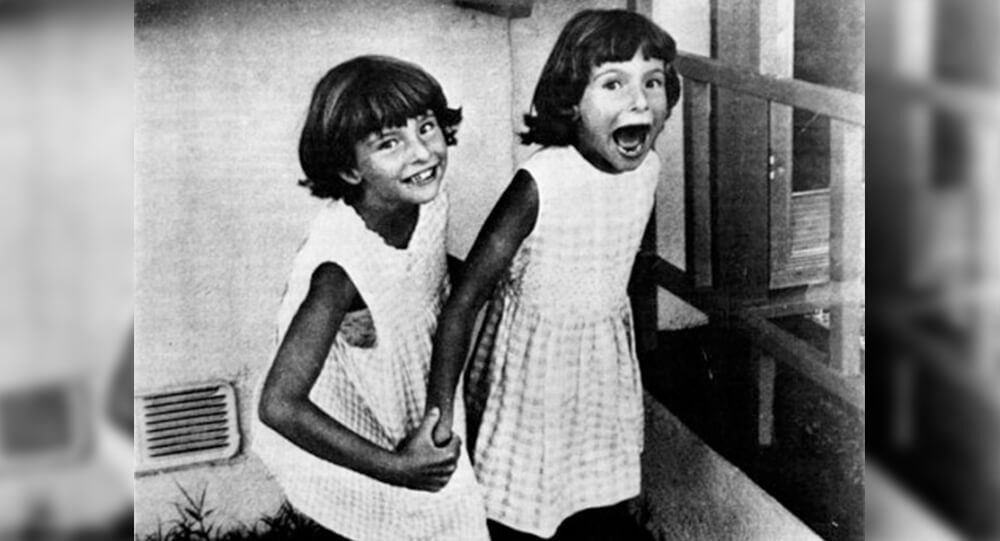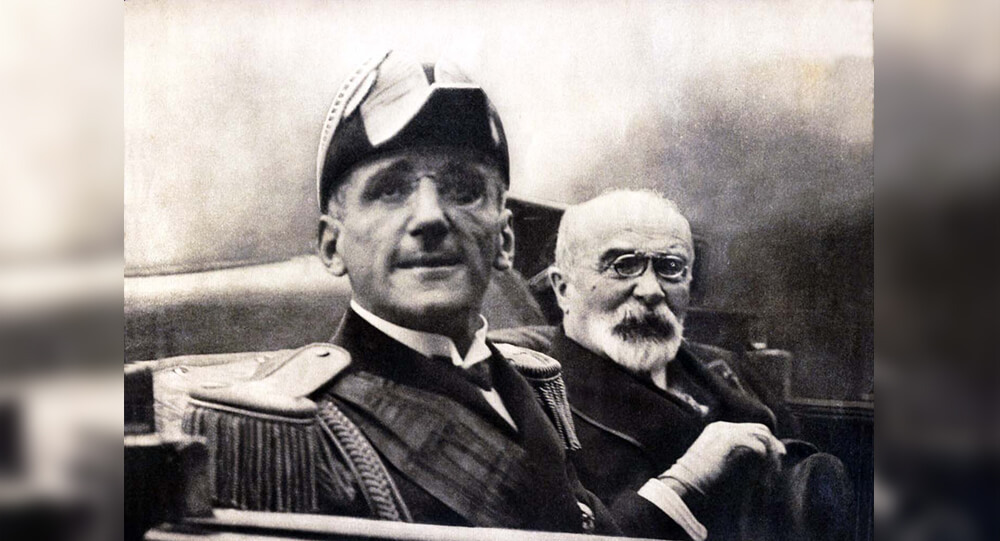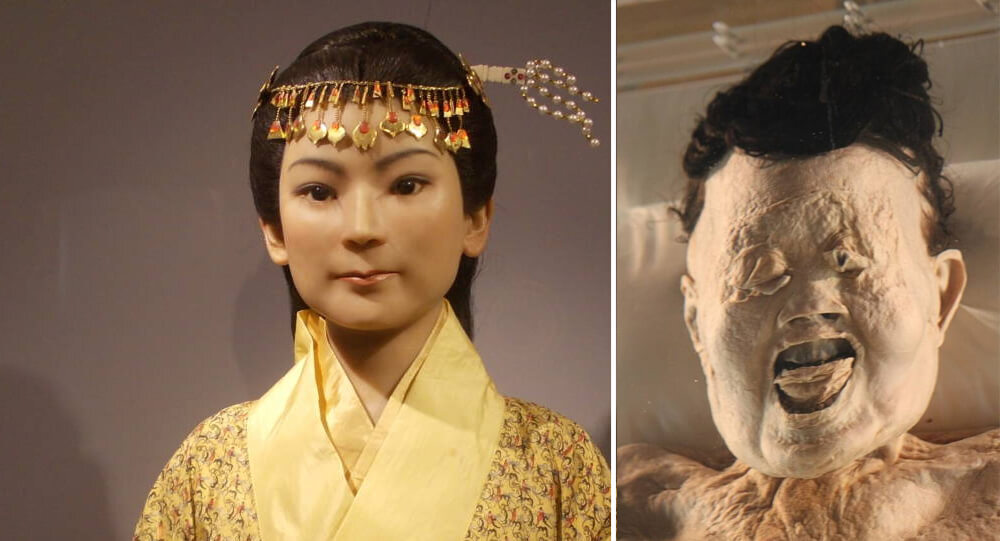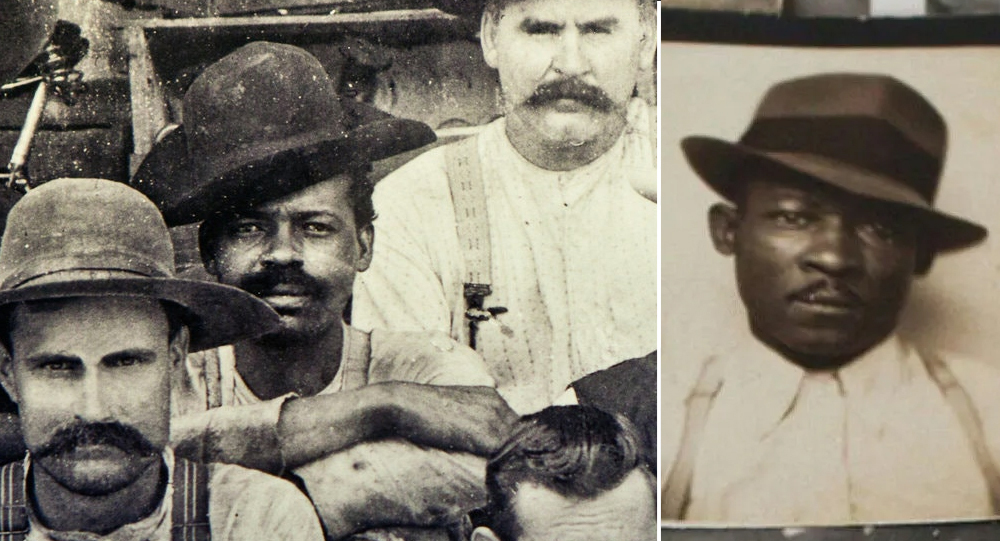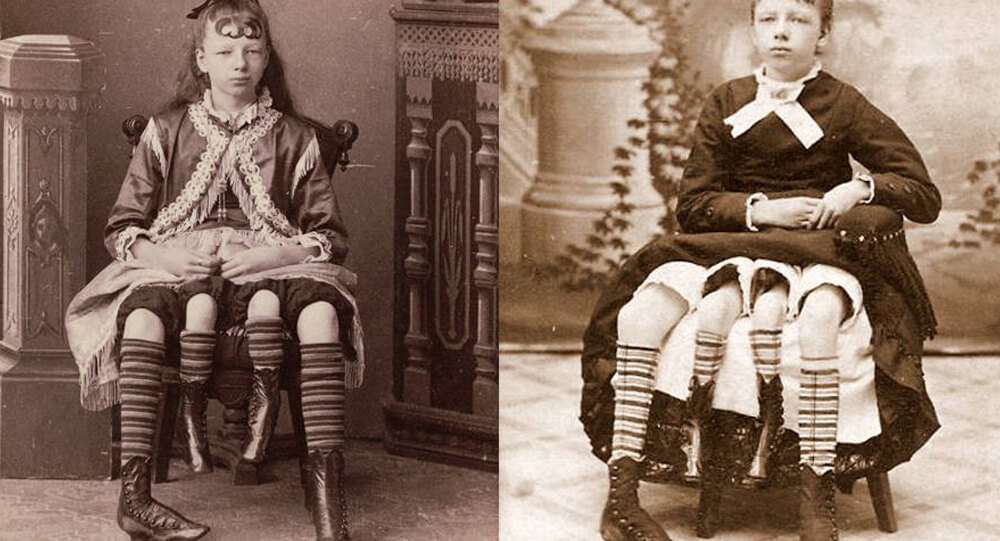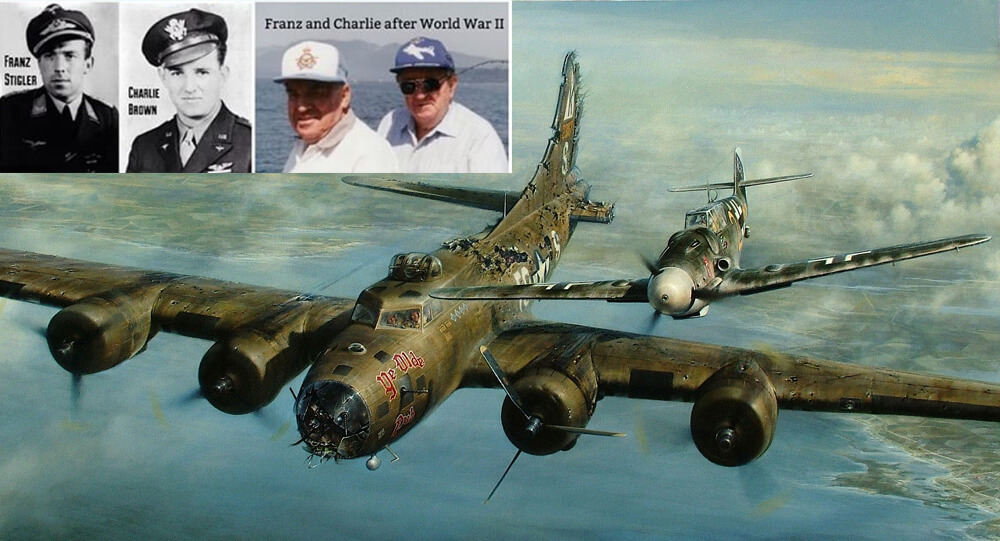
The Charlie Brown and Franz Stigler incident happened on December 20, 1943, when German fighters severely damaged Charles “Charlie” Brown’s B-17 Flying Fortress (named “Ye Olde Pub”) following a successful bomb run on Bremen. Despite having the chance to bring down the damaged bomber, Luftwaffe pilot and ace Franz Stigler chose to let the crew return to their airfield in England for humanitarian reasons. The two pilots eventually crossed paths 40 years later after a thorough search by Charlie Brown, and the friendship they formed lasted until their deaths.
Pilots
Farm boy from West Virginia and 2nd Lt. Charlie Brown flew the B-17F for the 379th Bomber Group of the United States Army Air Forces (USAAF) at RAF Kimbolton in England. Franz Stigler, a veteran Luftwaffe fighter pilot from Bavaria who had previously flown for an airline, was a member of Jagdgeschwader 27 at the time and had amassed 22 victories. With one more enemy aircraft brought down, he would qualify for the coveted Knight’s Cross.
Bomb run
Brown’s B-17 started its 10-minute bomb run at 27,300 feet, in minus 60 °C of outside air. Accurate anti-aircraft fire damaged the bomber’s Plexiglas nose, disabled the number two engine, and further damaged the number four engine, which had to be throttled back to avoid overspeeding before the bomber released its bomb load. Due to the bomber’s slowing down from the damage, Brown was unable to stay with his formation and retreated as a straggler, where he would be subject to continuous enemy attacks.
Attacks by fighters
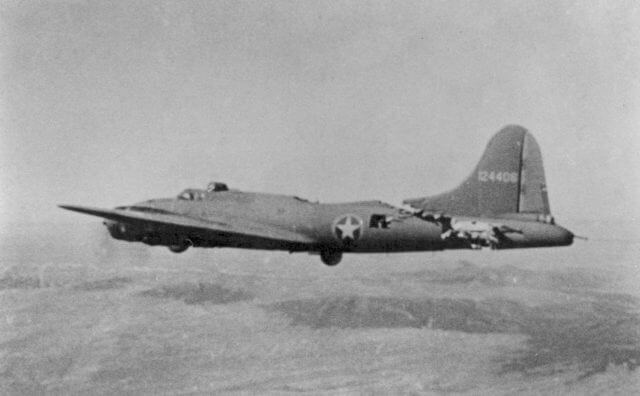
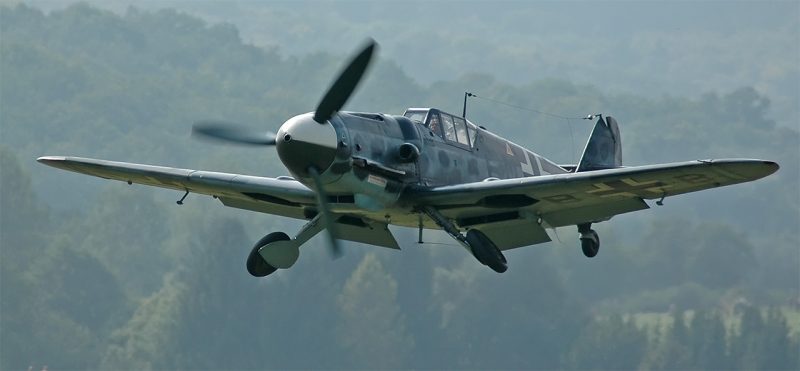 Brown’s B-17 was even more damaged than this one; the B-17 pictured was able to land with all their crew alive.
Brown’s B-17 was even more damaged than this one; the B-17 pictured was able to land with all their crew alive.Now, for more than ten minutes, more than a dozen enemy fighters—a mix of Bf-109s and FW-190s—attacked Brown’s lone B-17. Additionally, the number three engine, which could only produce half power, suffered damage (meaning the aircraft had at worst 40 percent of its total rated power available). Internal oxygen, hydraulic, and electrical systems of the bomber were also compromised. The bomber’s two dorsal turret guns and one of its three forward-firing nose guns were its sole remaining defensive armament (from eleven available). The majority of the crew were now injured (the tail gunner had died), and Brown had a shoulder injury.
When Brown ran out of oxygen, he passed out. When he awoke, the bomber was remarkably flying level at a height of about 1000 feet. He regained the controls and started the long journey home in the wrecked bomber.
Franz Stigler

Germans on the ground, including Franz Stigler, who was refueling and arming at an airfield, noticed Brown’s damaged bomber. He quickly accelerated in his Messerschmitt Bf-109 and caught up to Brown’s aircraft. Stigler was able to see the hurt and helpless crew clearly through the bomber’s damaged air frame. The crippled bomber was not attacked by Stigler, which surprised the American pilot.
During his time fighting in North Africa, Gustav Rödel recalled the advice of one of his commanding officers from the Jagdgeschwader 27: “You are fighter pilots first, last, always. If I ever hear of any of you shooting at someone in a parachute, I’ll shoot you myself.” Stigler later commented, “To me, it was just like they were in a parachute. I saw them and I couldn’t shoot them down.”
Stigler made two attempts to convince Brown to either land his aircraft at a German airfield and surrender or to make a U-turn and land in nearby neutral Sweden, where he and his crew would receive medical care but would also be interned and forced to sit out the rest of the war. Brown objected and carried on. Then Stigler flew close to Brown’s aircraft, escorting it until they reached the North Sea, and then he took off while saluting.
Landing
Brown was able to fly his aircraft the 250 miles across the North Sea and land it at RAF Seething, home of the 448th Bomb Group. He then told his officers about how a German pilot had let him go during the post-flight debriefing. In order to avoid creating a favorable impression of enemy pilots, he was instructed not to mention this to the other members of the unit. While Stigler was aware that a German pilot who spared the enemy while in battle risked execution, Brown remarked that “someone decided you can’t be human and be flying in a German cockpit.” Stigler kept the incident a secret from his commanding officers.
Lt. Brown went on to complete a combat tour.
Post-war and meeting of pilots
Charlie Brown returned to West Virginia after the war, attended college there, and then enlisted in the Air Force once more in 1949, serving there until 1965. Later, he traveled to Laos and Vietnam a lot while serving as a Foreign Service Officer for the State Department. But he decided to become an inventor in Miami in 1972, so he gave up his job as a government employee.
In 1953, Stigler moved to Canada and established a prosperous business.
Colonel Charlie Brown, who had just retired, was asked to give a speech in 1986 at the “Gathering of the Eagles,” a gathering of combat pilots. After being questioned about his most memorable missions from World War II, Brown took a moment to reflect and remembered the tale of Stigler’s escort and salute. Brown then made the decision to look for the unidentified German pilot.
Brown had spent four years looking in vain for American and West German Air Force records that might provide some insight into the identity of the other pilot, but he had not found much. Then he sent a letter to the newsletter of a group of combat pilots. Brown got a letter from Stigler, who was residing in Canada, a few months later. It declared, “I was the one. Stigler gave Brown all the information he needed to know to identify him as the German fighter pilot when they spoke on the phone about his plane, including the escort and salute.
Franz Stigler and Charlie Brown became close friends between 1990 and 2008, and they remained so until their deaths a few months apart in 2008.

What is the story behind Wrigley chewing gum?
Wrigley's was originally a soap company that gifted baking powder with their soap. The baking powder became more popular than the soap so they switched to selling baking powder with chewing gum as a gift. The gum became more popular than the baking powder so the company switched to selling gum.

Marion Stokes recorded 30 years of television
Marion Stokes, a Philadelphia woman began taping whatever was on television in 1979 and didn’t stop until her death in 2012. The 71,000 VHS and Betamax tapes she made are the most complete collection preserving this era of TV. They are being digitized by the Internet Archive.

1972 Andes Plane Crash Survivor recall the terrifying Struggles to Stay Alive
On October 13, 1972, a plane carrying a rugby team from Uruguay crashed in the Andes between Chile and Argentina. The survivors were in brutal conditions - high altitude, bitter cold, and the lack of food—and faced the most terrible choice—eating the frozen flesh of their dead friends or starving to death themselves.

The 440-pound bear named Wojtek and his World War II battle against the Nazis
Polish troops raised an orphaned bear cub during WWII. He enjoyed drinking beer, and was trained to salute. He became officially enlisted as a member of the forces, and helped carry artillery during battle.

3 men lived on top of a billboard in tents for almost 9 months
From 1982-1983, three men in Allentown PA competed in a radio contest in which they lived on top of a billboard in tents. Whoever stayed up longest would win a house. Due to economic pressure from the recession, none of the contestants wanted to give up, so the contest lasted almost 9 months.

What exactly was the US's 'Ghost Army' during WWII?
During WW2, there was a special unit of men dubbed the ‘Ghost Army’. The unit was made of artists, creative and engineers and their job was to create deception about the enemy. From inflatable tanks to phony convoys to scripted conversations in bars intended to spread disinformation, they used all possible tricks to fool the enemy.

Roller Coasters were First Invented to Distract People from sin
Roller coasters were invented to distract Americans from sin. In the 1880s, hosiery businessman LaMarcus Thompson didn’t like that Americans were going to places like saloons and brothels and created the first roller coaster on Coney Island to persuade them to go there instead.

Keith Sapsford: The Story of 14-Year-Old Stowaway
The final image of 14-year-old Australian Keith Sapsford, who aspired to travel the world. In February 1970, he sneaked into the wheel-well of a plane flying from Sydney to Tokyo. It opened mid-air & fell out. When a photographer was testing a new lens, he captured this moment on film and was surprised when it developed.

The incredible story of Julia "Butterfly" Hill and her legacy
American environmental activist Julia “Butterfly” Hill lived in a 1500-year-old California Redwood tree for 738 days to prevent it from being cut down by the Pacific Lumber Company. The Simpson’s episode “Lisa the Tree Hugger” was inspired by Hill’s story.

Medieval Medicine: A 1,000-year-old onion and garlic salve kills modern bacterial superbugs
Scientists recreated an Anglo-Saxon manuscript-based 9th century onion and garlic eye remedy and discovered that it killed 90% of antibiotic-resistant staph bacteria (MRSA).

Ancient Egyptians Had Pregnancy Tests Over 3500 Years Ago
The ancient Egyptians used a pregnancy test that involved potentially pregnant women peeing on barley and wheat seeds. Plant growth indicated pregnancy: barley for a boy and wheat for a girl. Later tests revealed that pregnant women's urine causes plant growth 70% of the time, whereas non-pregnant women's urine does not.

Knockers-up: waking up the Industrial Britain's Workers in 1900-1941
Before alarm clocks were invented, there was a profession called a knocker-up, which involved going from client to client and tapping on their windows (or banging on their doors) with long sticks until they were awake. It lasted into the 1920s.

Nordlingen, The Town Inside A Meteorite Crater With Millions Of Meteorite Diamonds
The German town of Nördlingen is embedded with 72,000 tons of microscopic diamonds. About 15 million years ago, a meteorite hit this region, and the impact created a massive depression and formed rocks containing diamonds, glass, and crystals. The town was built in the impact crater sometime around 898 CE.

Man's Blood Helped Save Millions of Babies
Australian blood donor James Harrison has been one of our most impressive and valued donors, having donated for 60 years. Know his story, how he was a pioneer of our Anti-D program, and why this matters.

The Horrific story of Ariel Castro and the Cleveland abduction
Cleveland abduction victims Gina DeJesus, Michelle Knight, and Amanda Berry were forced to live in Ariel Castro's house of horrors for 10 years. He raped and beat them until they escaped in 2013.

10 world’s most destructive and dangerous volcanic eruptions in history
Volcanic eruptions can devastate cities, change the world's atmosphere, and devastate economic systems. They can create molten lava rivers, mudslides, suffocating ash, and poisonous gases that cause chaos around the world for years. A volcanic explosion's effects can be massive, from its size to its death toll to its economic cost. Here is ten world’s most destructive and dangerous volcanic eruptions in history.

Quaker Oats Fed Children with Radioactive Oatmeal
In the 1940s and 1950s, Quaker Oats and MIT conducted experiments on radioactive iron and calcium-containing cereal. The diet was part of a study to see if the nutrients in Quaker oatmeal traveled throughout the body. In January 1998, a $1.85 million settlement was reached for 30 victims who came forward.

Saudi Arabia camel carvings dated to prehistoric era
Archaeologists were shocked to discover that a series of camels carved into desert rock faces in north-western Saudi Arabia are actually prehistoric, dating from 7,000-8,000 years ago - before either the Pyramids of Giza or Stonehenge were built.

D.B. Cooper: Man who hijacked a plane and jumped out with a $200,000
On November 22, 1971, DB Cooper hijacked a Boeing 727, drank a whisky, smoked a fag, and then jumped out of the plane with $200,000. He was never again seen.

Poto And Cabengo: The Secret Language Of Twins
Poto and Cabengo, as the two girls called each other, communicated in their own language. The twins were ignored by their parents and secluded from the outside world because their father felt they were developmentally retarded, and their unique language evolved as a result of that neglect.

The Assassination Of King Alexander
The assassination of King Alexander of Yugoslavia marked a pivotal moment in the country's history. This article delves into the rise and reign of King Alexander, exploring his early life and ascension to the throne. It also examines the political and social climate in interwar Yugoslavia, setting the stage for the tensions and challenges that ultimately culminated in his tragic assassination. By understanding the context in which this event unfolded, we can better grasp the significance and impact it had on the nation and its future.

Mother who spent entire life savings for daughter’s cancer treatment won the lottery
A mother won $2 million from a $10 scratch-off lottery ticket after she spent all of her entire life savings to pay her daughter’s cancer treatment. She bought the winning ticket after her daughter’s last cancer treatment.

Xin Zhui And The Story Of The Stunningly Intact Lady Dai Mummy
A 2,000-year-old mummy of a Chinese woman, Xin Zhui, also known as “Lady Dai,” was preserved in 21 gallons of an “unknown liquid.” With her original hair, organs, eyebrows, and eyelashes intact, the mummy still has blood in her veins. Her skin and ligaments are soft and as flexible as that of a living person.

Nearest Green, America's first known Black master distiller
Nathan "Nearest" Green was an African-American head stiller who is now more frequently referred to as a master distiller. He was renowned for imparting his distilling knowledge to Jack Daniel, the creator of Jack Daniel's Tennessee whiskey distiller, after Jack Daniel was freed from slavery following the American Civil War.

The true story of Josephine Myrtle Corbin, the lady born with four legs and two private parts
Josephine Myrtle Corbin, an American sideshow performer born in 1868, had a rare condition known as dipygus, which caused her to have four legs, each smaller inner leg paired with one of her outer legs. Corbin joined the sideshow circuit, captivating audiences as the "Four-Legged Girl from Texas."

